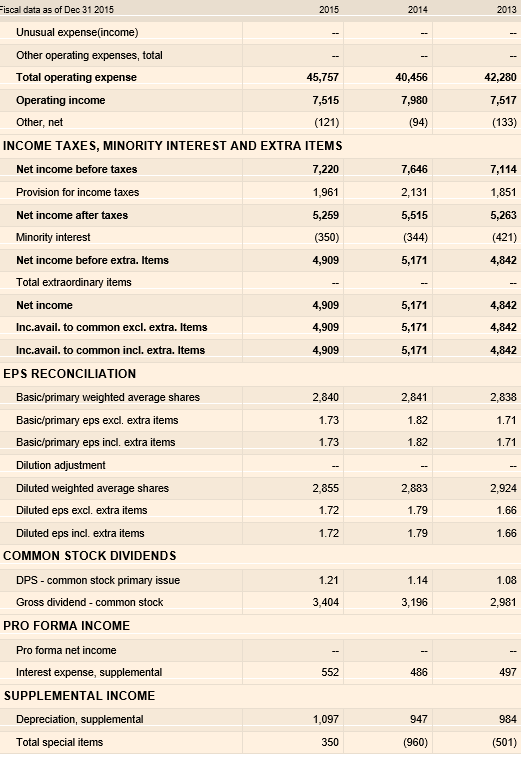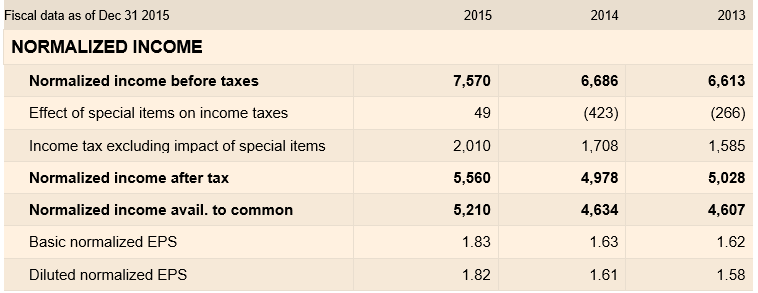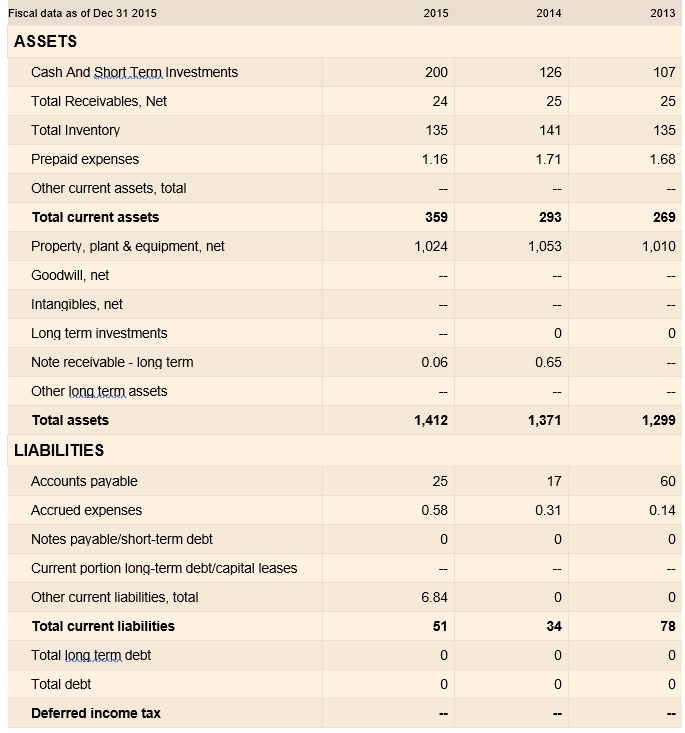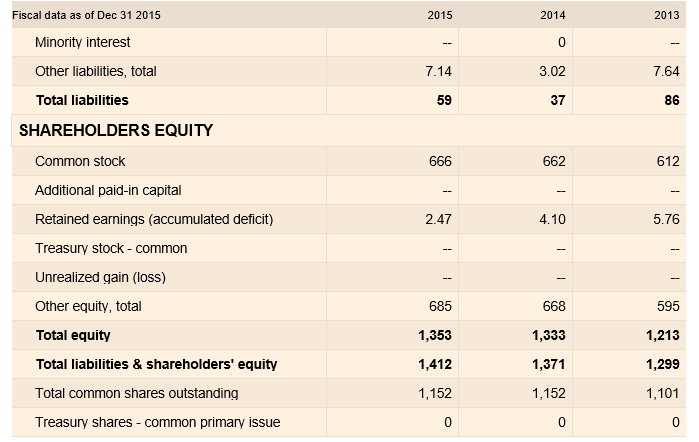Essay on Company Finance
Number of words: 2234
Introduction
Company financing is a critical part in operations within companies. To fulfill this objective Equity and Debt financing are common approaches by firms in fulfilling their financial needs. Debt financing refers to one borrowing funds which will have to be repaid with an interest within a particular period of time. On the other hand Equity financing refers to the selling of companies’ shareholding interests to raise funds. During operations, most companies utilize both of these strategies in raising funds for their operations (Coleman, Cotei,& Farhat, 2016). In order for a company to utilize either of the two financing options, relative cost of financing comes into play. Although equity does not impact on the debt of the company, it relates to the shifting of shareholders interest.
A closer look at debt shows that it is a cheaper option but it provides cash flow liabilities. This form of financing needs high levels of management. Equity on the other end is less risky compared to long term debt. They tend to provide more favorable accounting ratios that are attracting to consumers. However in relation to long term debt, Equity financing comes with the influence of opportunity cost (Teixeira, 2014). Business can expand more rapidly with debt financing as compared to equity financing.
Equity Financing
Equity financing refers to the raising of capital in an investment through selling of shares. It refers to the selling of ownership interest in order to raise capital. Equity financing, spans over a huge range of activities in businesses. It may relate to an entrepreneur raising capital from friends or their relatives. It may also relate to organizations raising capital from the public through Initial public offerings IPOs (Dong, Hirshleifer, & Teoh, 2012). This mode of financing has been utilized by various organizations on a global scale. The term is associated with public companies listed on an exchange. However it may also include private companies searching for financing capital.
In reference to Equity financing there is the sale of other instruments apart from common stock. The other forms of instruments on offer in relation to equity financing include warrants, convertible preferred stocks as well as preferred stocks (Karabarbounis, Macnamara, & McCord, 2014). Equity is always accompanied by a prospectus. Prospectus as well as a memorandum is essential in providing investors with relevant information to assist in making decisions based on the merits of the investment. Information in such documents includes details of its officers, directors as well as operations of the firm. It also provides investors with the uses of proceed from their investment, financial statements and risk factors involved. Therefore investors’ interest in investing in equity depends on the market volatility.
Pros of Equity Financing
Most companies utilize the combination of debt and equity financing in their operations. However Equity financing has various advantages over debt financing. One of the prominent advantages of equity financing is that it does not carry the repayment obligation common with debt financing. Further, equity financing provides for an additional working capital to the organization (Coleman et al 2016). There is no additional payment value as opposed to debt financing which requires for the payment of interest above the value borrowed. Additionally, debt financing comes with monthly repayment rates that are not present in equity financing. By investing in equity financing, a company escapes the possibility of restriction brought about by debt financing. A bad credit rating in relation to debt financing might dent the image of a company.
Equity financing provides additional funds apart from monies borrowed from banks and other lenders. A company may decide to utilize funds from investors to cover for startup costs. The extra money it may have at its disposal may be utilized in expanding the business or developing new ventures. This mode of financing is therefore less risky as compared to debt financing since the company has no obligation of repaying its shareholders (Teixeira, 2014). Equity financing also assist organizations strengthens its legitimacy. Through the use of this method of financing a company has the ability of improving its credibility among its investor networks.
The other advantage of equity financing is that the company provides prospectus for its operational decisions. This means that stakeholders will be aware and respect company’s decision in case of failures. Further in terms of management, companies that invest in equity might have the additional advantage of expert advice. Investors might provide invaluable expertise as well as important contacts (Antebi & Krauthamer, 2015).
Disadvantages
The main disadvantage of this form of financing is that investors receive some form of ownership. In this case the investors share to some degree the profits of the firm. In this case if the company observes some takeoff, it is also imperative that investor’s interest increases with such takeoffs. In respect to this, the company might have to pay investors more that they could pay for loans in the long run. Equity financing might be detrimental to organization with respect to loss of control. Through this financing option, companies might lose its control since investors might form their own management teams. In some instances company directors may be unwilling to dilute their controlling power (Teixeira, 2014).
Equity financing may be a source of various conflicts within an organization. Sharing of ownership within such companies might be a cause for conflicts. For example shareholders might have diverse vision and ideas of running the company. This might lead to high levels of tension and conflicts. Provision of equity financing may be time consuming and costly. At some instances company directors might lose track of their plans and venture into different prospects. Companies investing in equity financing need to manage on time (Teixeira, 2014). There is need for such companies to invest in providing investors with constant information on their investments. Further, this form of investment might be faced with various regulatory obligations and challenges.
Debt Financing
Debt financing refers to when a business borrows funds from financial institutions, banks and other companies. This form of borrowing needs to be centered on supporting business operations. In this form of financing, the principal amount of the loan is paid at a later date while the interest comes before the maturity of the loan. This form of financing occurs when a firm raises its capital by selling bonds and bills. In return the lending firm is promised by the borrowing firm of repayment of the principal amount plus interest.
Advantages of Debt financing
The most important advantage as compared to equity finance is the absolute control of the firm. In this form of financing, the lenders only charge the borrower specific form of interest on the principal amount borrowed. Unlike in equity financing lenders have no right in managing the operations of the company. The ownership of such a firm stays firmly under the hands of shareholders and company directors (Warusawitharana& Whited, 2016). This then means that lenders of funds are not entitled to profits made by the firm during its operations. The only condition that the firm has is the repayment of the loans as borrowed.
The other advantage of debt financing is the ability of companies to deduct on their interest payment schedule. This payment is based on prime time basis. Further payment of the loan is tax-deductable. Investing in this form of financing reduces company’s tax liability by a great margin. The other advantages of debt management relates to credit management. Through proper management of debt, a company may be able to have high credit worthiness across its category (Mande, Park, & Son, 2012). Debt financing has the advantage of planning. Through its repayment schedule, firms may decide on the amount of funds to repay on a monthly basis as well as its interest.
This therefore makes it easy for firms to make financial plans and budgets. Debts assist in retaining of more profits within a company. In the case of debt financing, firms only pay back the amount of the loans irrespective of their profits. In the case of equity financing, the more the company gains profit the more it might have to pay its investors.
Disadvantages of Debt Financing
One of the disadvantages of debt financing, is that an organization not only pays the principal amount of the debt but also pays an interest. This interest may be detrimental to an organization. It may become a financial burden that might affect other operations within the firm. This might be a burden to the firm to the point where it might transfer its obligation to another firm. The cash value that could have been used to handle certain operations may be diverted to repaying the loan making the firm suffer huge financial consequences.
In the process of securing loans, companies may be forced to pledge collateral for the loan. In cases where the firm is unable to repay the loan, assets might be sold which might affect the firm to a greater extent. The other disadvantage to debt financing is that firms need to have high credit rating in order to secure loans. Companies that do not have a high rating in relation to lenders might have some difficulty in securing loans. Such companies may be seen a high risks according to lenders’ scales.
The other disadvantage of debt financing is the possibility of such loans in reducing growth rates of firms. This might be because of high costs of repaying of loans. One of the most disadvantaging influences in this category is the repayment of the compounding interest. Such influences in a growing company might lead to bankruptcy (White, 1974). The other disadvantage is that debt instruments may contain restrictions to management. This form of restrictions might prevent management teams from pursuing other forms of financing. Consequently principal amounts and interest amounts need to be paid on a regular interval. In Some instances such loans are not paid on time.
Equity and Debt Unilever Plc





Return on equity

Centamin Plc


Analysis
Price to book
This ratio is usedul in compiling company’s book value to current value of the market. It shows that investors wish company executive to generate more value from their investments given the current assets. It accounts for assets minus liabilities. (Chen, Chou, & Yen, 2016).

Earnings per Share (EPS)
Shows the proportion of company’s earnings is allocated to common share. It is represented in two ways basic and diluted form.

Return on equity

This aspect communicates to investors how their money is being utilized. It is used to analyse the profitability of firm in respect to shareholders influence. How a company utilizes its resources.
Recommendation
Unilever’s return on investment is impressive at this period according to the data above. Since the company deals in the provision of staple products, this value will continue to rise. Given the market volatility and the interest rate it is wise to purchase in this share. Its products are strong in the emerging market segment and it is deemed to continue increasing. Centamin Plc needs to increase its liquid assets. The other recommendation is the addition of its debt level to improve on its payout rate in the future.
Reference list
Coleman, S, Cotei, C, & Farhat, J 2016. ‘The debt-equity financing decisions of U.S. startup firms’, Journal Of Economics & Finance, 40, 1, pp. 105-126.
Mande, V, Park, Y, & Son, M 2012. ‘Equity or Debt Financing: Does Good Corporate Governance Matter?’, Corporate Governance: An International Review, 20, 2, pp. 195-211, Business Source Complete, EBSCOhost, viewed 19 July 2016.
Karabarbounis, M, Macnamara, P, & McCord, R 2014. ‘A Business Cycle Analysis of Debt and Equity Financing’, Economic Quarterly (10697225), 100, 1, pp. 51-85.
Dong, M, Hirshleifer, D, & Teoh, S 2012. ‘Overvalued Equity and Financing Decisions’, Review Of Financial Studies, 25, 12, pp. 3645-3683.
Teixeira, J 2014. ‘Outsourcing with debt financing’, Portuguese Economic Journal, 13, 1, pp. 1-24.
White, Wl 1974. ‘Debt Management And The Form Of Business Financing’, Journal Of Finance, 29, 2, Pp. 565-577.
Warusawitharana, M, & Whited, T 2016. ‘Equity Market Misvaluation, Financing, and Investment’, Review Of Financial Studies, 29, 3, pp. 603-654.
Antebi, G, & Krauthamer, N 2015. ‘Debt Vs. Equity: Comparing The Hewlett-Packard Appeal Arguments To The Pepsico Case’, Journal Of Taxation & Regulation Of Financial Institutions, 28, 6, Pp. 41-46.
Chen, S, Chou, Y, & Yen, C 2016. ‘Predicting US recessions with stock market illiquidity’, B.E. Journal Of Macroeconomics, 16, 1, pp. 93-123.